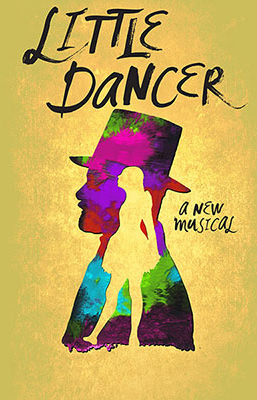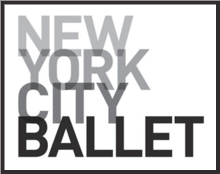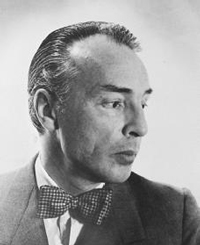 Edward Degas’ sculpture ‘The Little Dancer’ is one which every dancer is familiar with. Created in 1881, the model was a 14 year old student at the Paris Opera Ballet School named Marie van Goethem. The figure of the girl, standing in a casual fourth position, arms clasped behind her, has appealed to people – not just dancers – everywhere. It is also largely admired by dancers for its correct depiction of turned out limbs.
Edward Degas’ sculpture ‘The Little Dancer’ is one which every dancer is familiar with. Created in 1881, the model was a 14 year old student at the Paris Opera Ballet School named Marie van Goethem. The figure of the girl, standing in a casual fourth position, arms clasped behind her, has appealed to people – not just dancers – everywhere. It is also largely admired by dancers for its correct depiction of turned out limbs.
Now the story of the model and the artist has been brought to the stage in a new musical, directed and choreographed by the legendary Broadway choreographer Susan Stroman. It is now running at the Kennedy Centre in Washington DC until the end of November, with the expectation that the new musical will transfer to New York in the near future. The lead role of the young Marie has been created for Tiler Peck, a principal dancer of New York City Ballet who has recently been trying her hand at musical theatre. It has been maintained that this will be one of the rare Broadway musicals not based on a film.
In more news for NYCB, Christopher Wheeldon will be directing and choreographing a stage version of one of the most iconic musical films of all time: An American in Paris. NYCB principal Robert Fairchild, an exceptionally versatile performer, will take on the Gene Kelly role as the leading man.
The much-loved Gershwin songs guarantee a first-rate score, and it will be exciting to see how Wheeldon handles the pressure of a big Broadway musical, bringing the film’s characters to life in the 21st century, despite being much better known as a classical ballet choreographer. An American in Paris opens in Paris at the Théatre du Chatelet in December and arrives on Broadway in April next year.

 New York City Ballet company, founded in 1948, has announced its 2013-14 season, and it is set to be incredibly exciting for eager ballet and dance fans of all genres. The new season is set to include the world premieres of ballets by Peter Martins, Justin Peck, Angelin Preljocaj and Liam Scarlett, a good result due to the speculation surrounding his absence from the next Royal Ballet season.
New York City Ballet company, founded in 1948, has announced its 2013-14 season, and it is set to be incredibly exciting for eager ballet and dance fans of all genres. The new season is set to include the world premieres of ballets by Peter Martins, Justin Peck, Angelin Preljocaj and Liam Scarlett, a good result due to the speculation surrounding his absence from the next Royal Ballet season. It has been announced that the Paris Opera Ballet will be taken over by Benjamin Millepied, the choreographer and a former principal at New York City Ballet, in September 2014. The previous director, Brigitte Lefèvre, will retire at the end of the 2013-14 season after nearly ten years at the top.
It has been announced that the Paris Opera Ballet will be taken over by Benjamin Millepied, the choreographer and a former principal at New York City Ballet, in September 2014. The previous director, Brigitte Lefèvre, will retire at the end of the 2013-14 season after nearly ten years at the top. January 22 2013 marked the birthday of Giorgi Melitonovitch Balachivadze, otherwise known to ballet and dance fans all over the world as George Balanchine, born in 1904 in St. Petersburg, Russia. Balanchine, as the co-founder of the New York City Ballet and one of the greatest choreographers of modern ballet, created the aesthetic we can recognise in theatres today, with costumes of often just leotards, tights and shoes. Other works, such as Jewels, are more classical in taste, but still echoes the Balanchine style and legacy throughout the dance sector in the twenty-first century.
January 22 2013 marked the birthday of Giorgi Melitonovitch Balachivadze, otherwise known to ballet and dance fans all over the world as George Balanchine, born in 1904 in St. Petersburg, Russia. Balanchine, as the co-founder of the New York City Ballet and one of the greatest choreographers of modern ballet, created the aesthetic we can recognise in theatres today, with costumes of often just leotards, tights and shoes. Other works, such as Jewels, are more classical in taste, but still echoes the Balanchine style and legacy throughout the dance sector in the twenty-first century. Italian designer Valentino Garavani is making his New York City Ballet comeback, set to design all the costumes for the opening of next season’s programme, a far cry from practice tights and cover-ups. Garavani will be travelling back and forth to the Big Apple from Italy to prepare the costumes of the show, ready for an exhibition which will open in London in November which will be completely dedicated to his fashion and works.
Italian designer Valentino Garavani is making his New York City Ballet comeback, set to design all the costumes for the opening of next season’s programme, a far cry from practice tights and cover-ups. Garavani will be travelling back and forth to the Big Apple from Italy to prepare the costumes of the show, ready for an exhibition which will open in London in November which will be completely dedicated to his fashion and works.